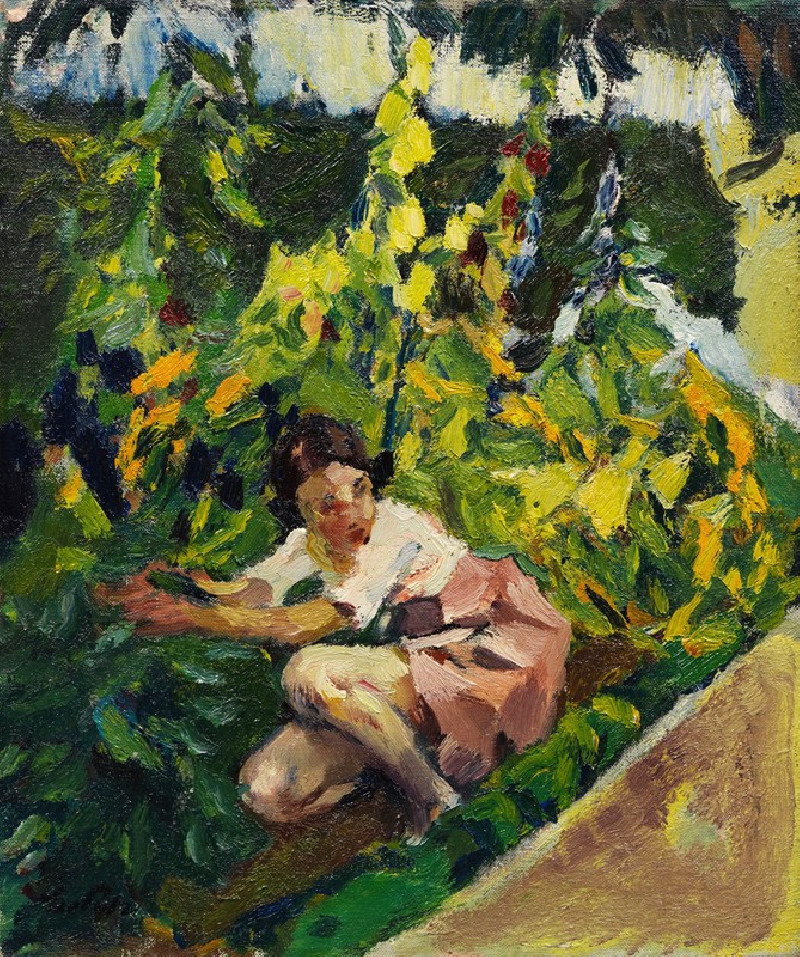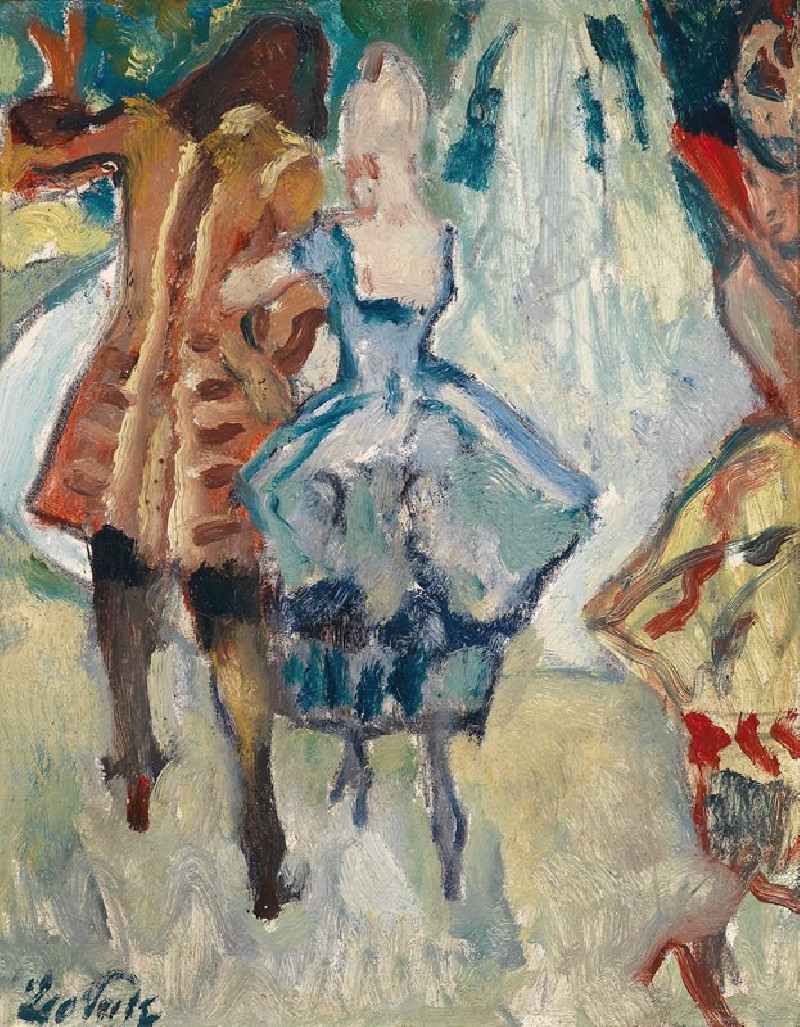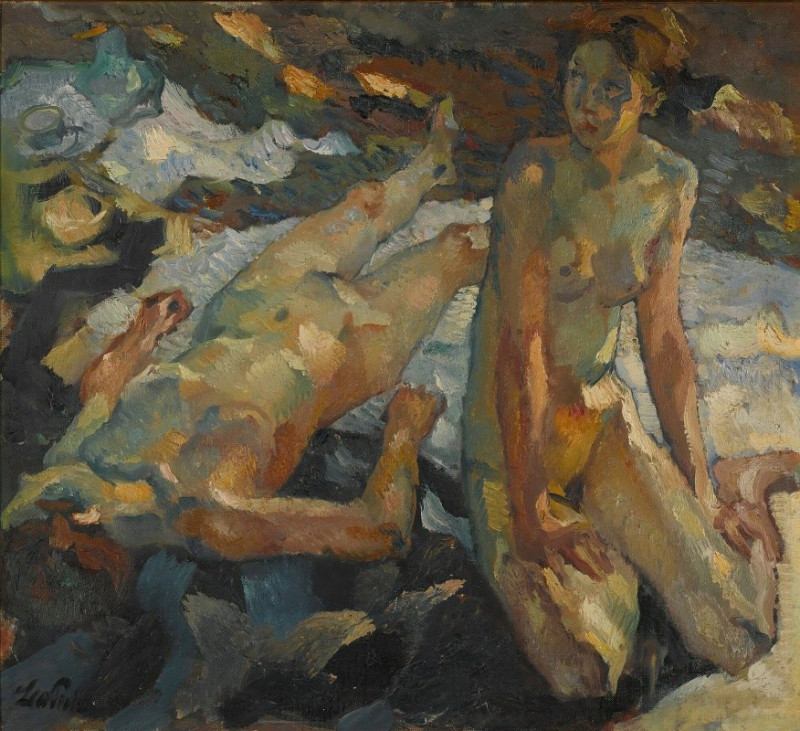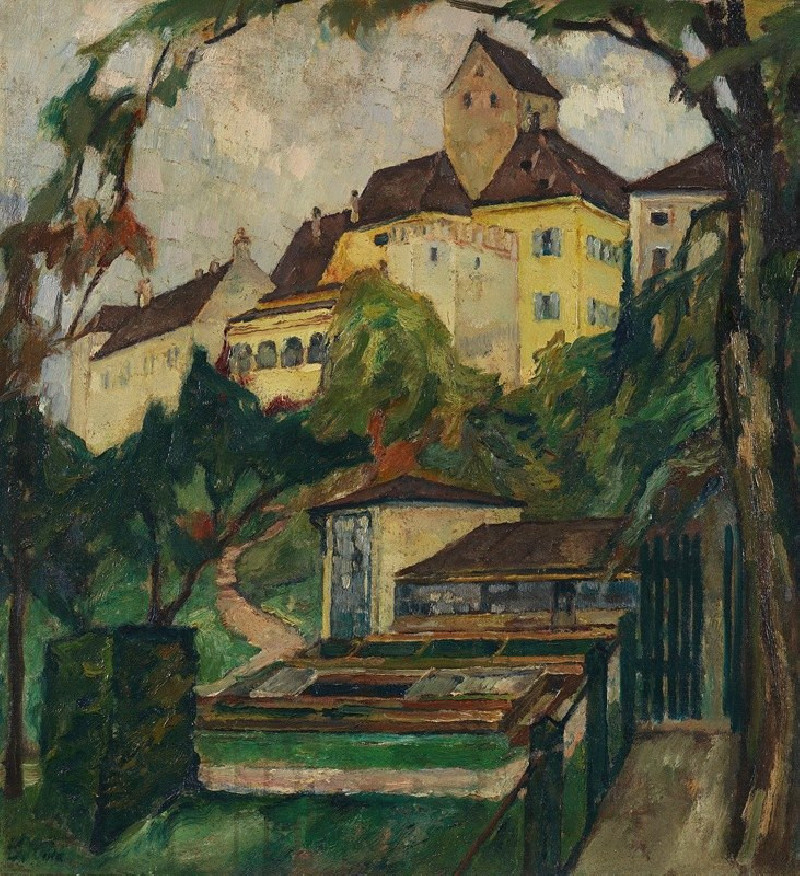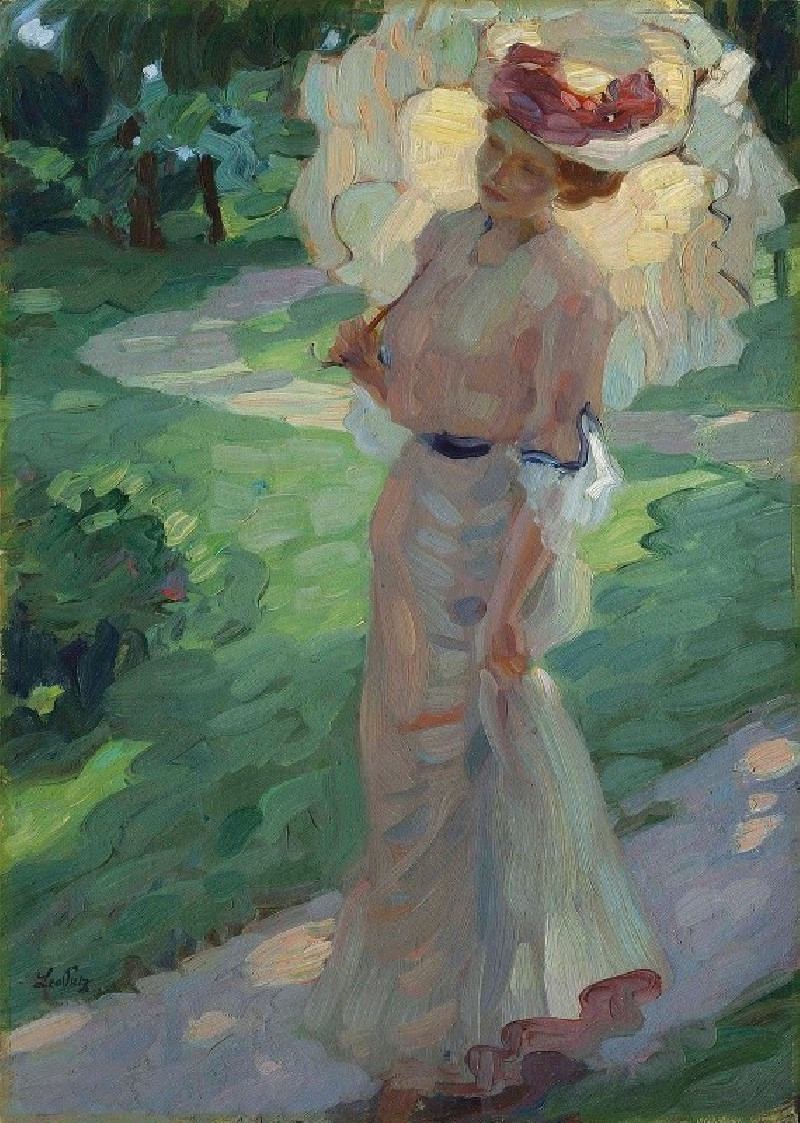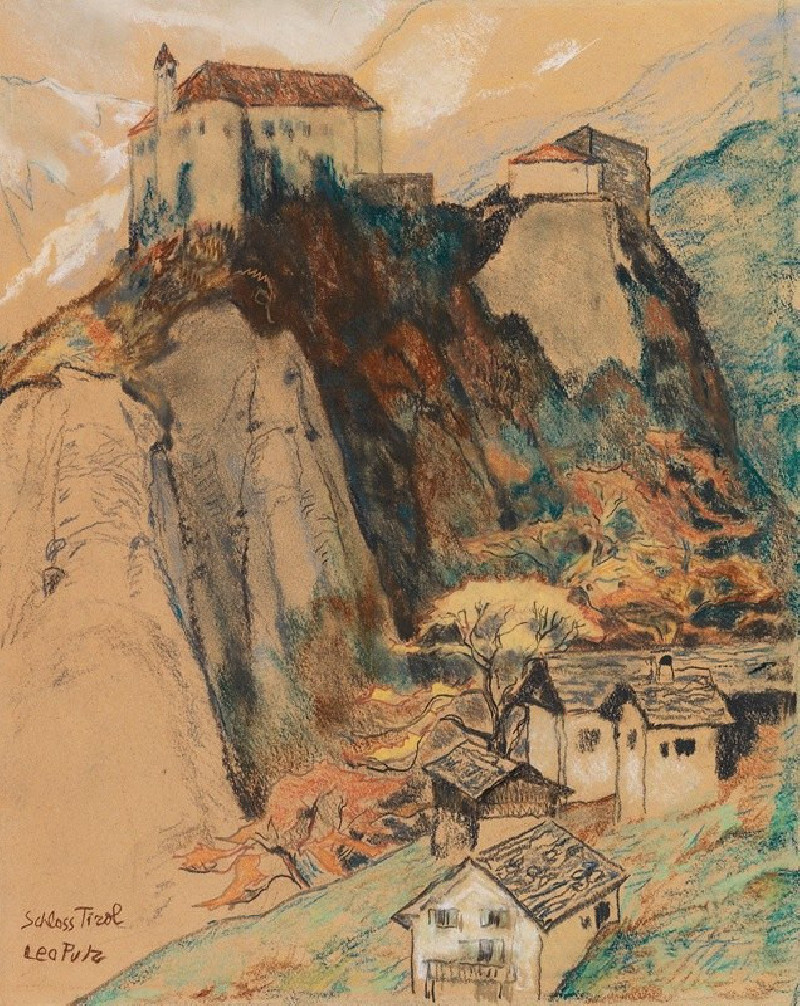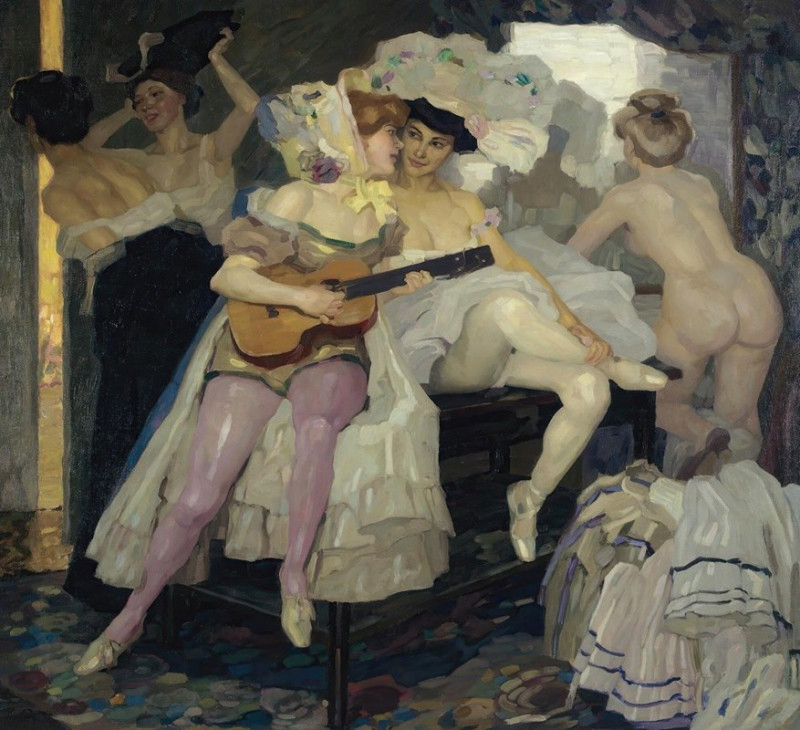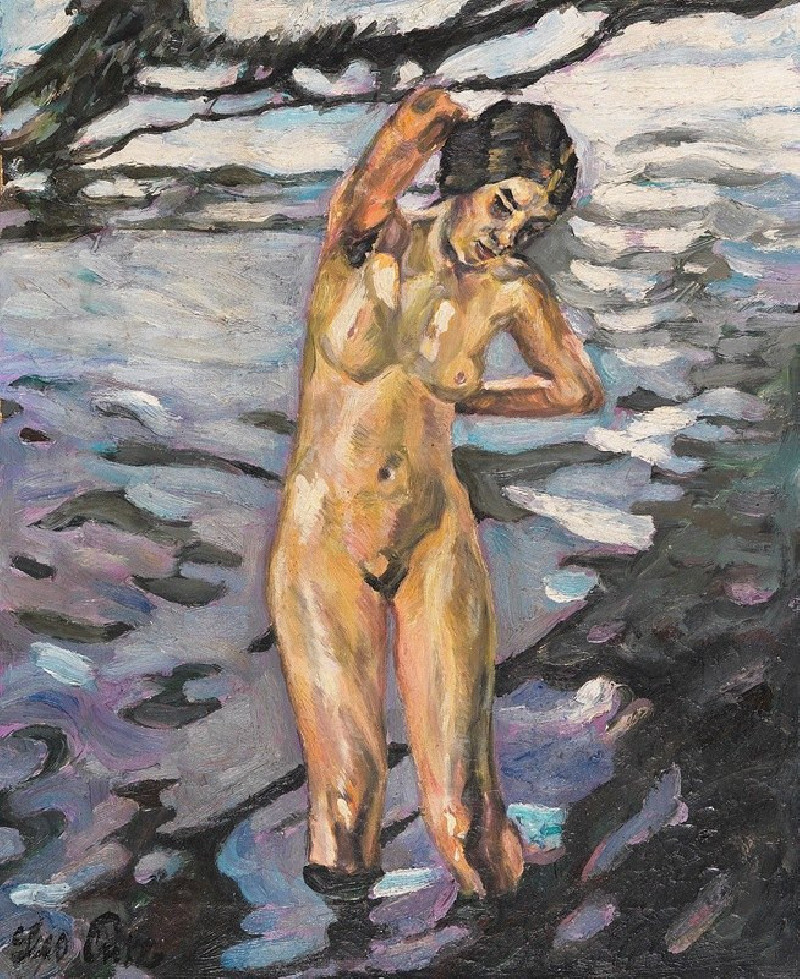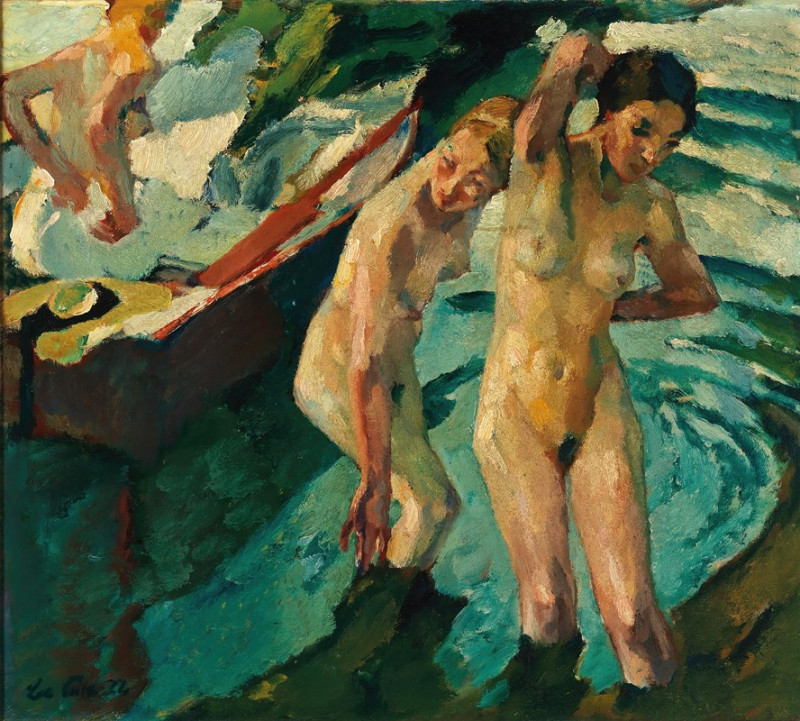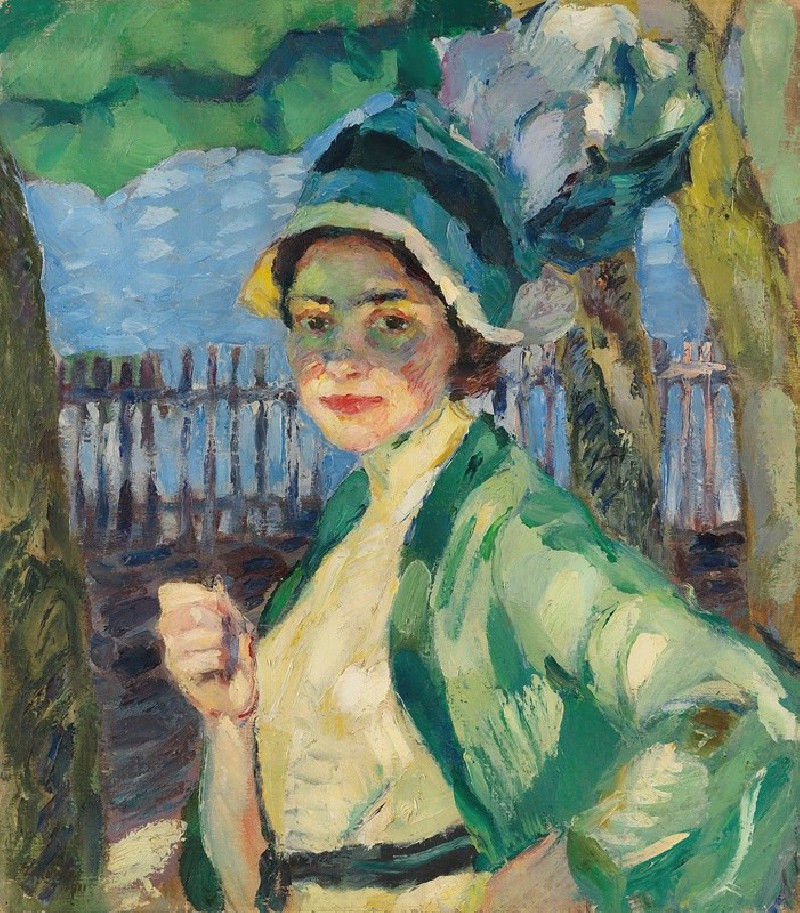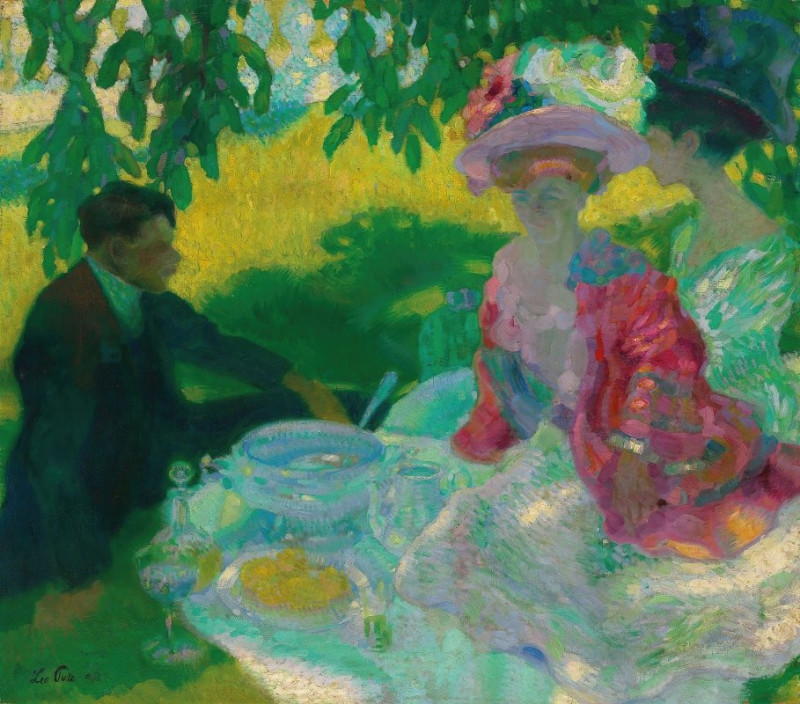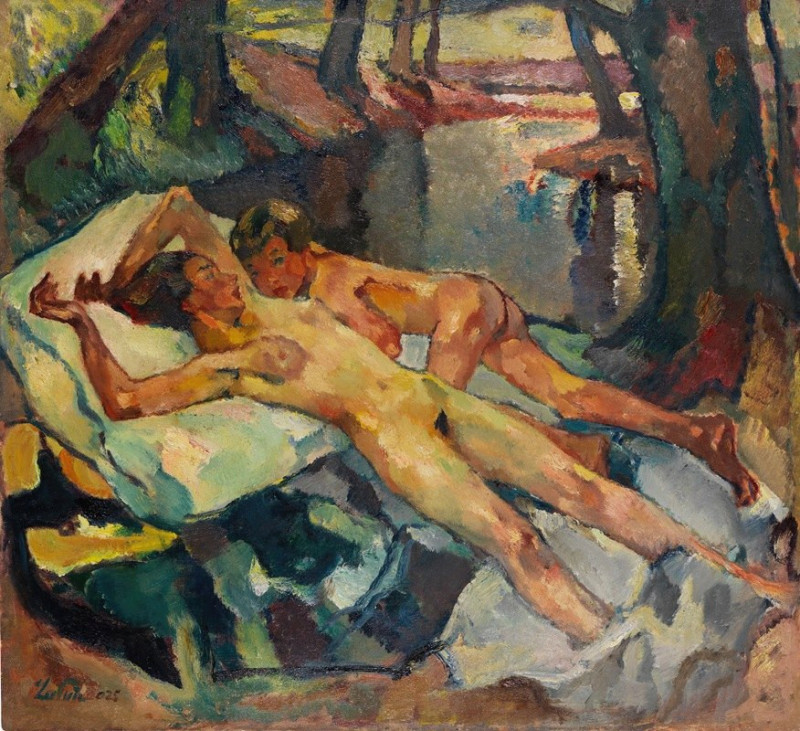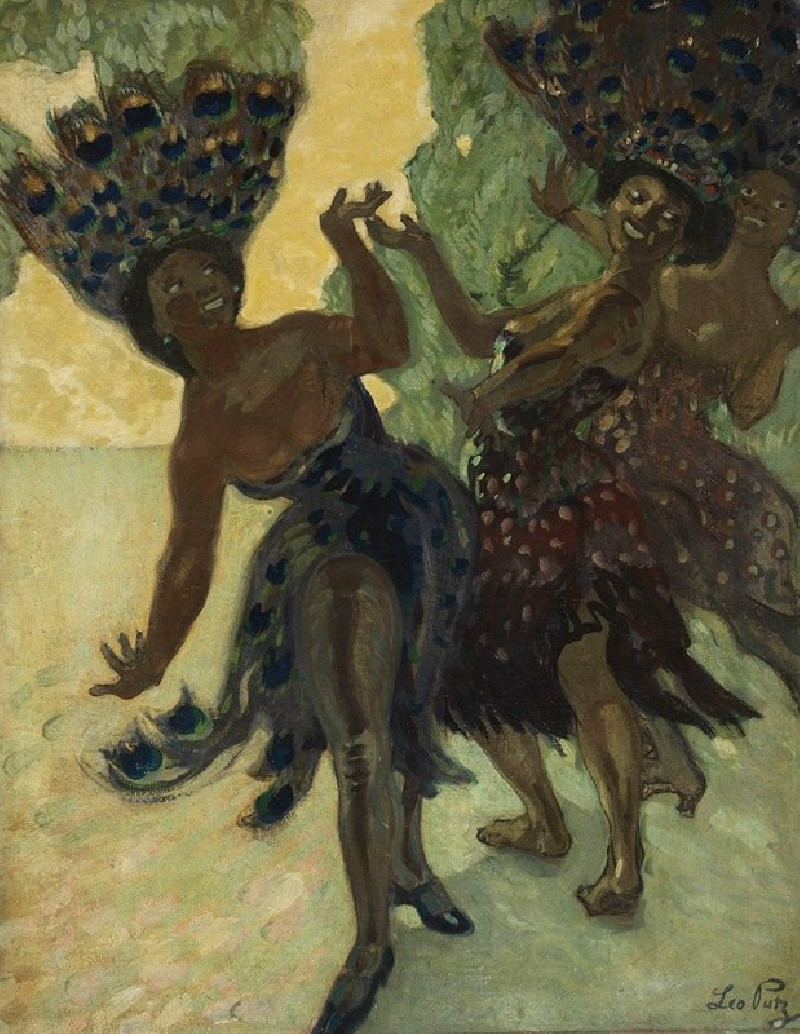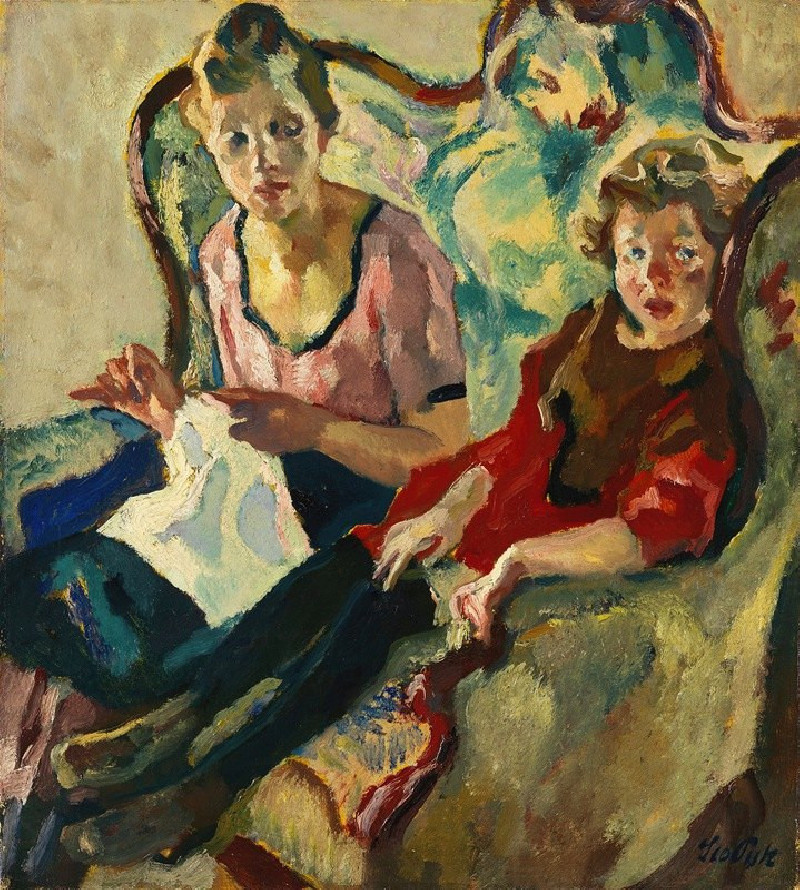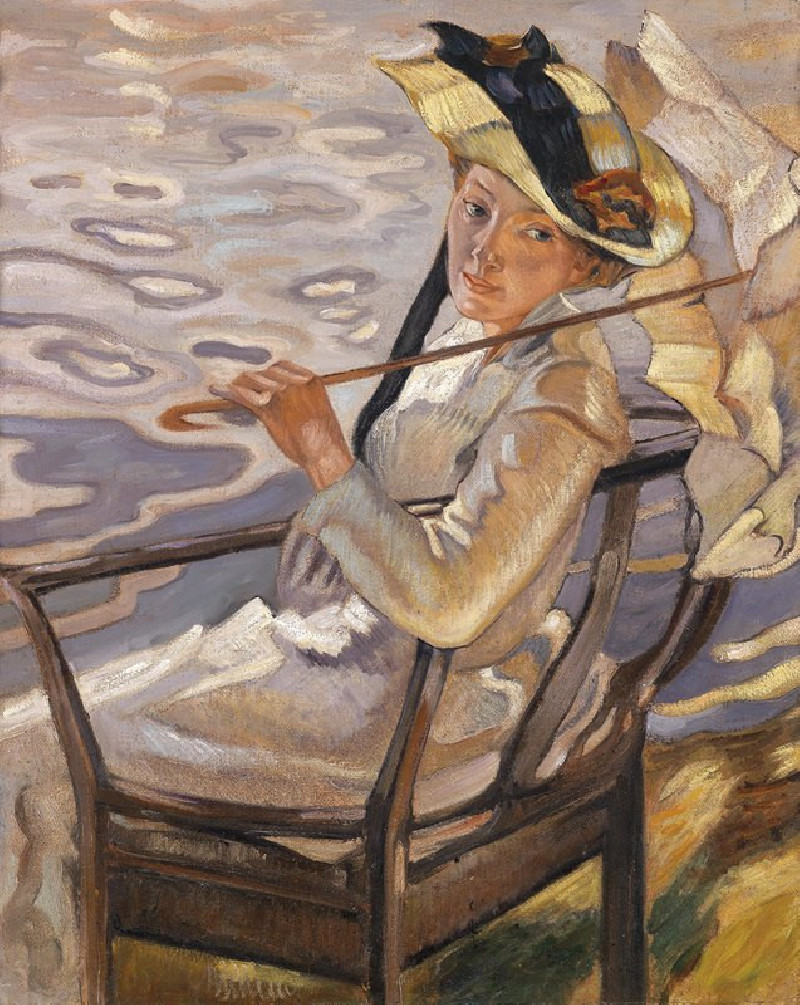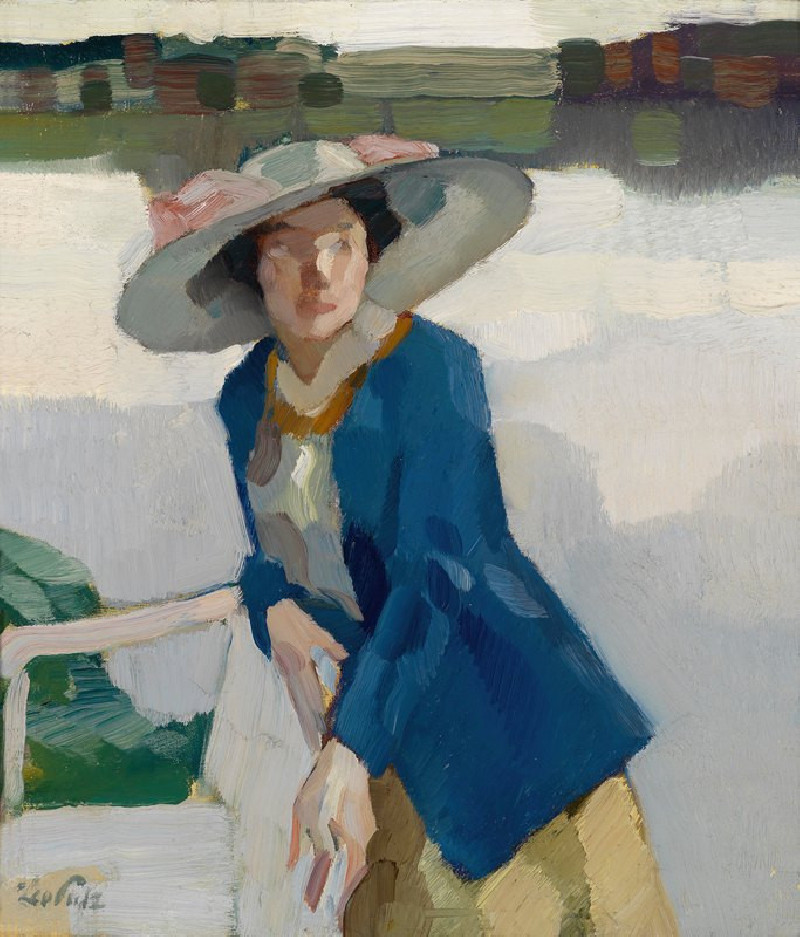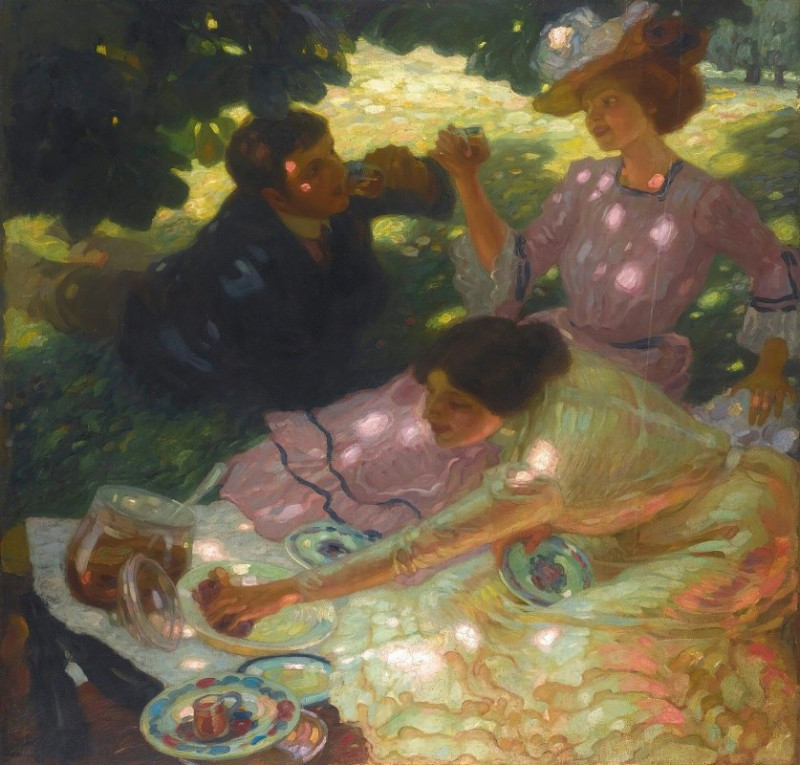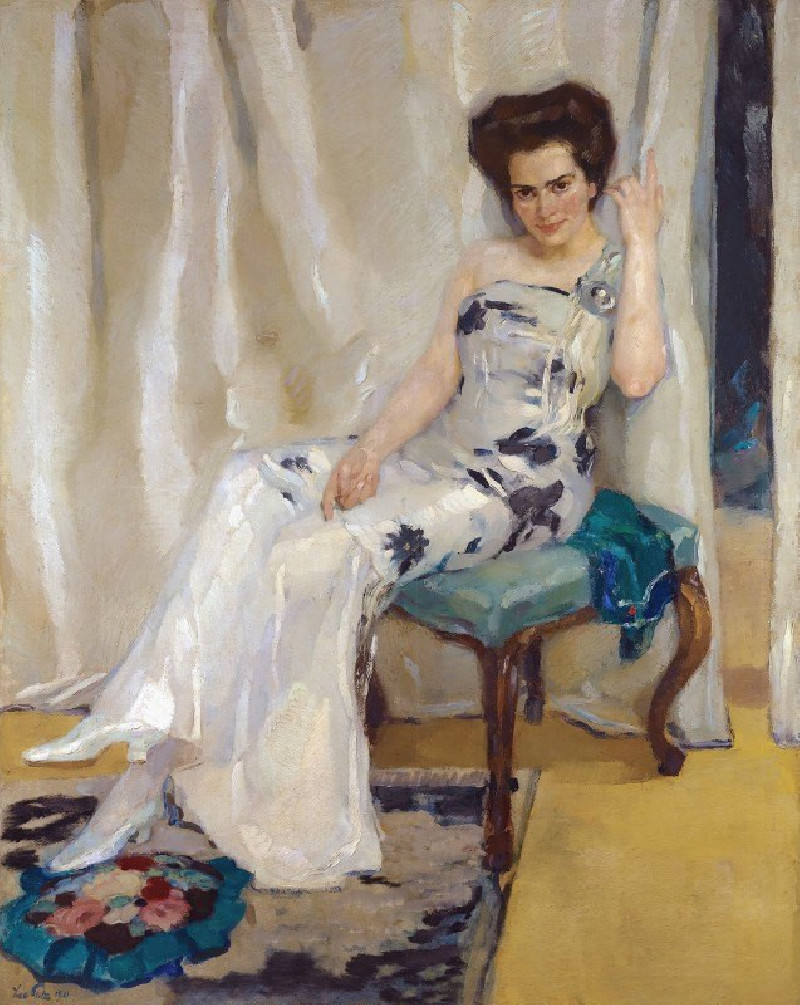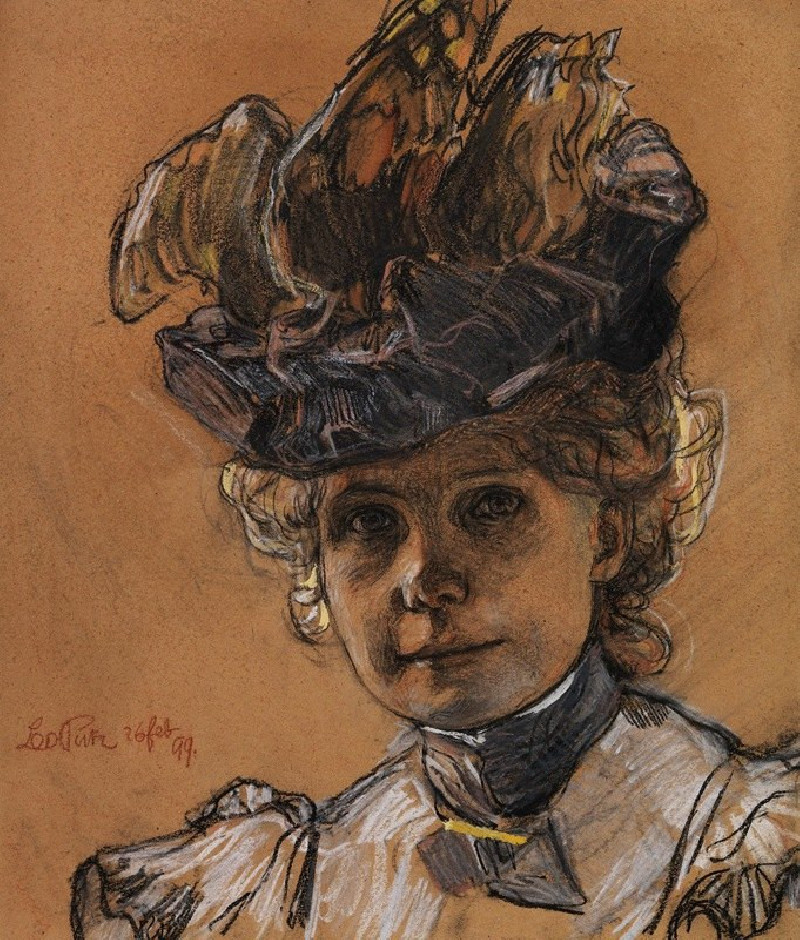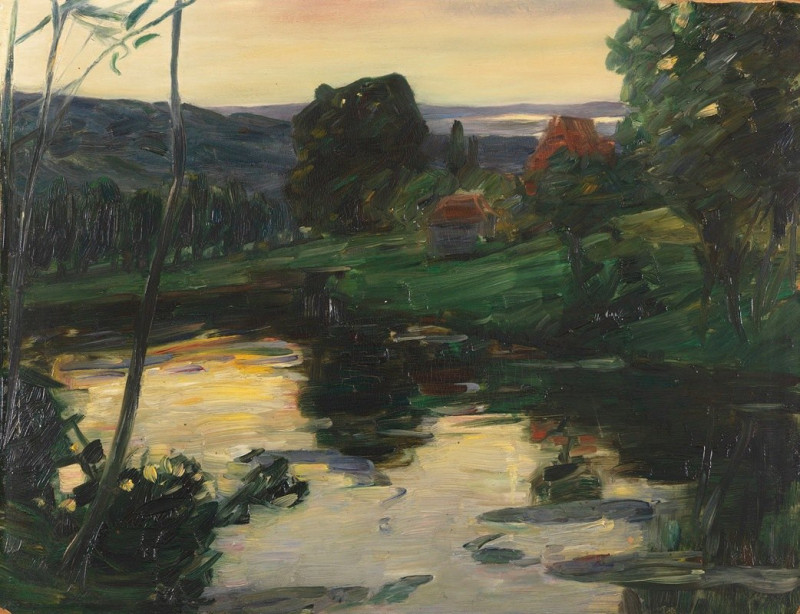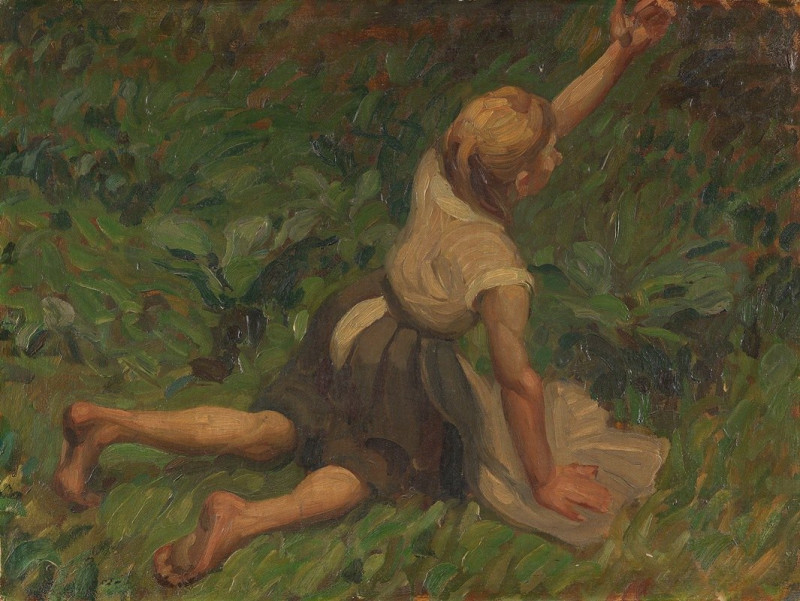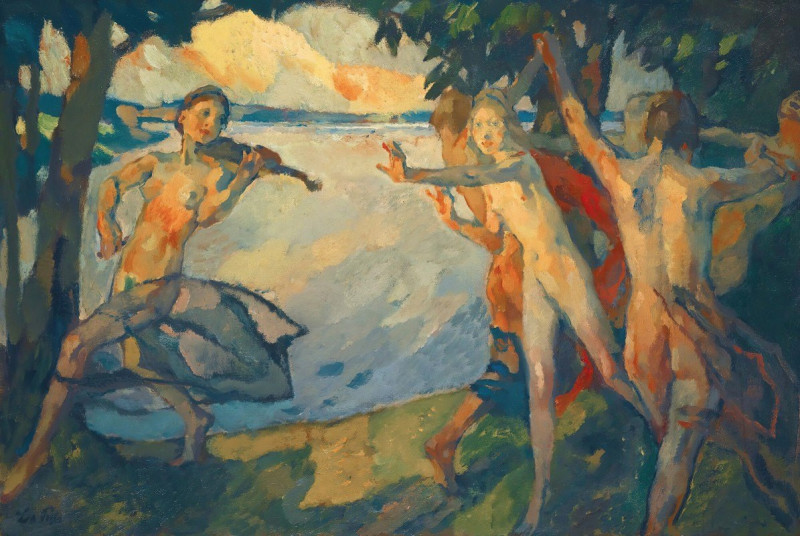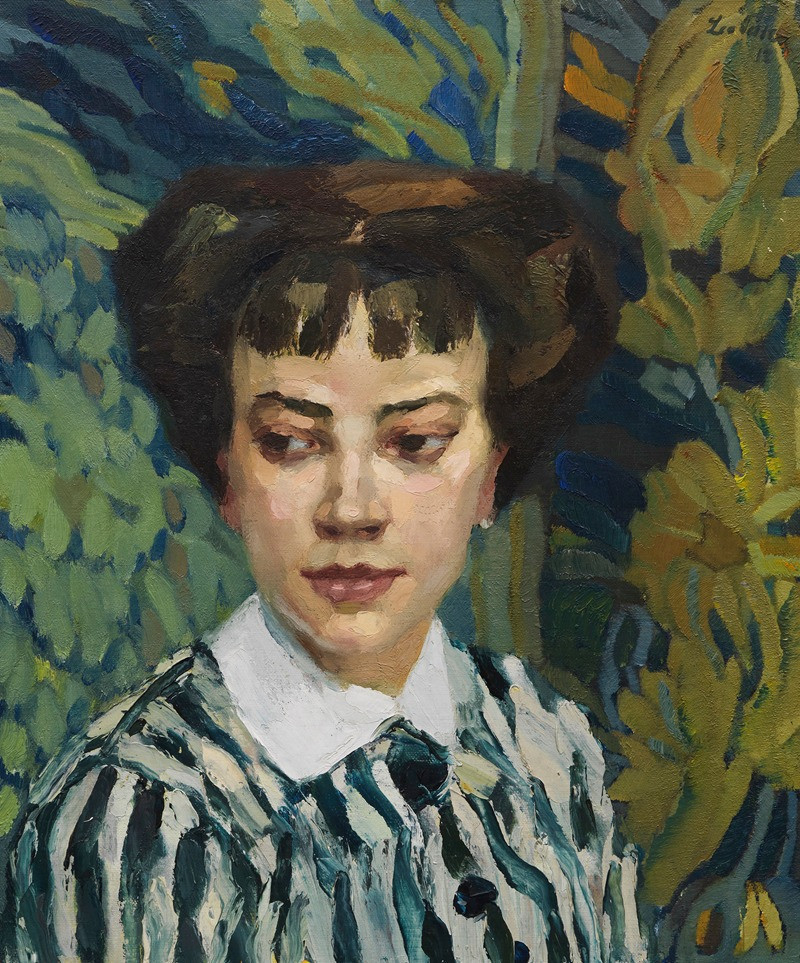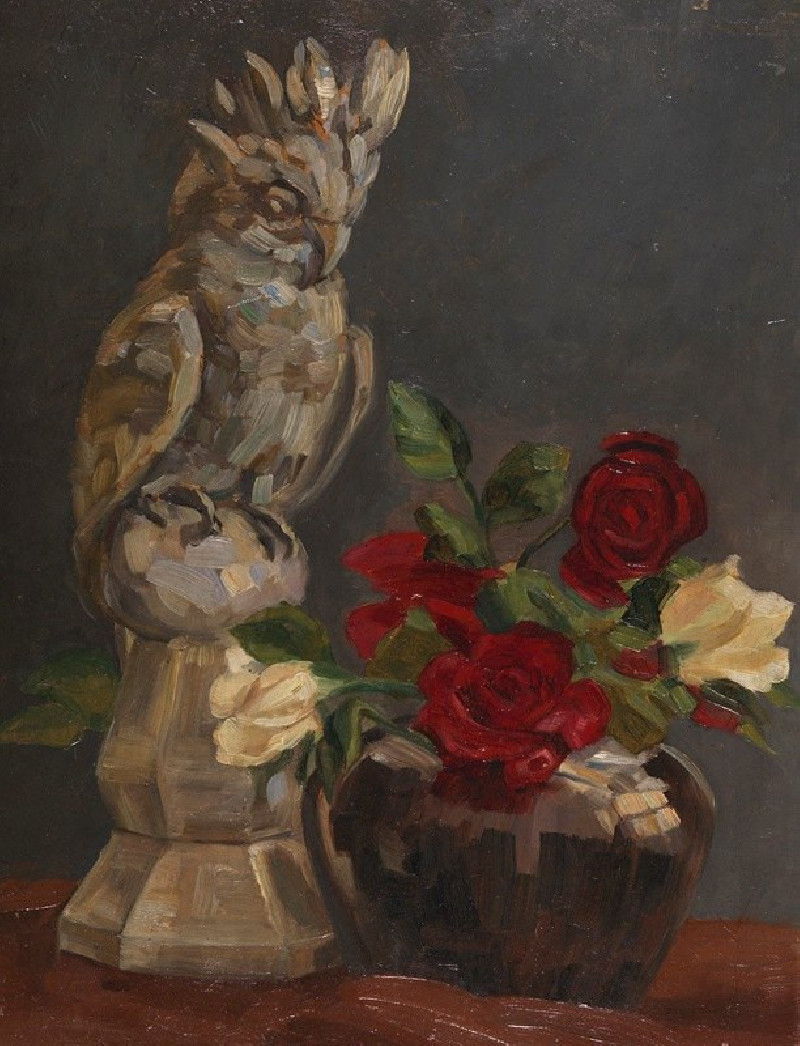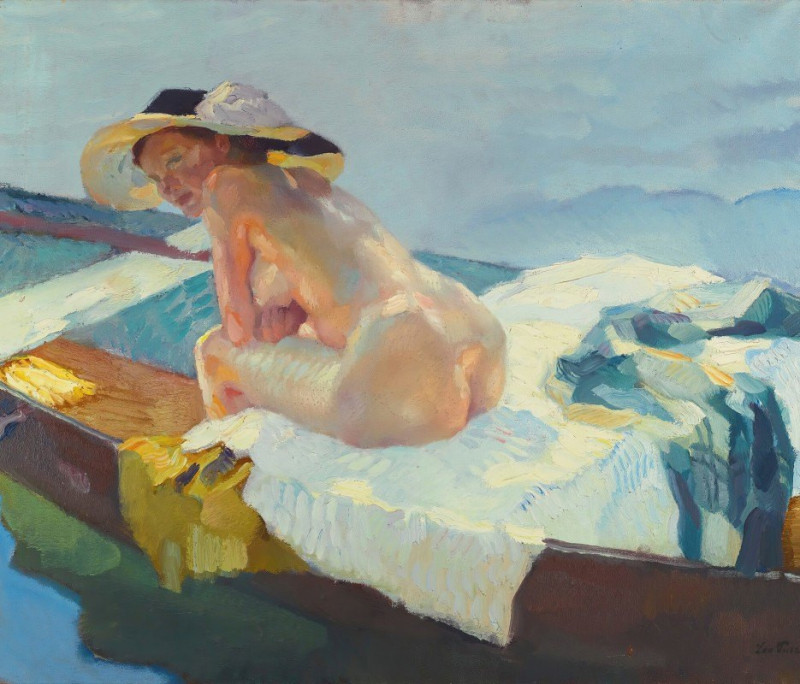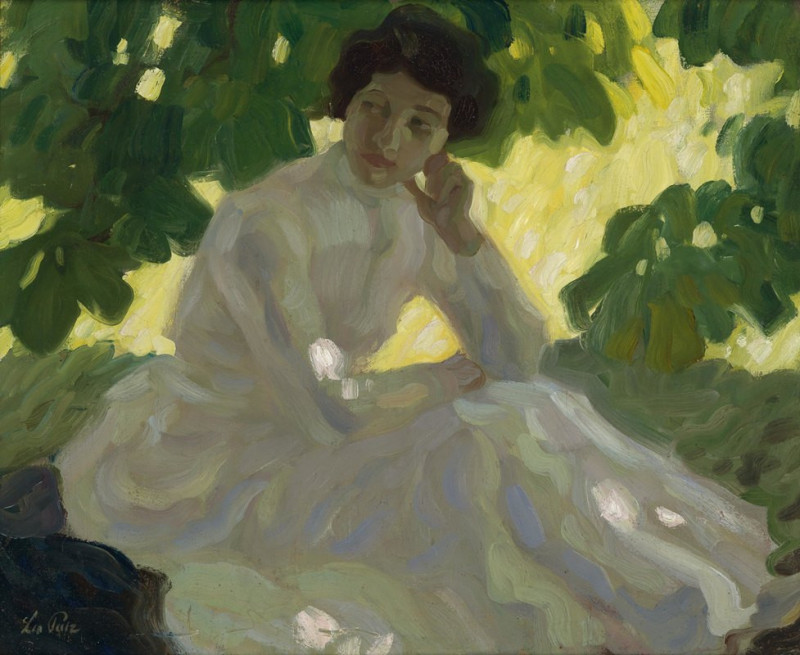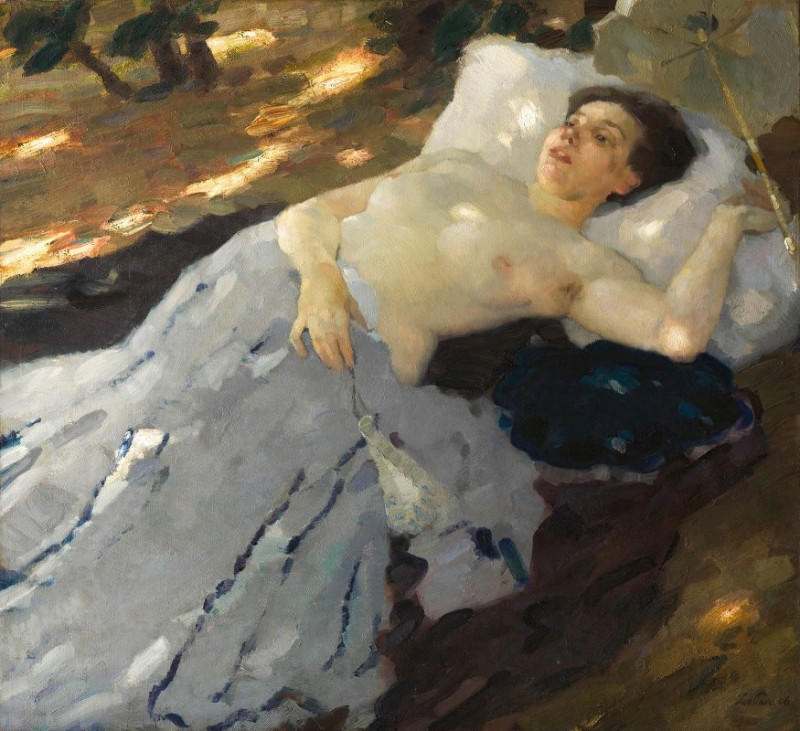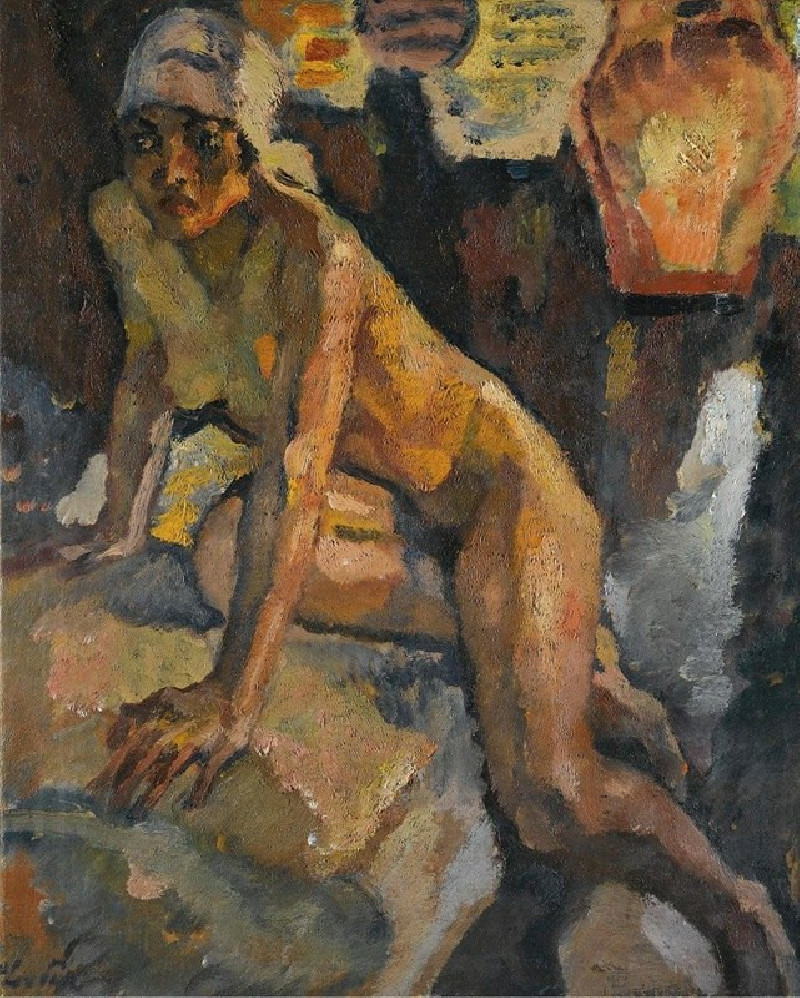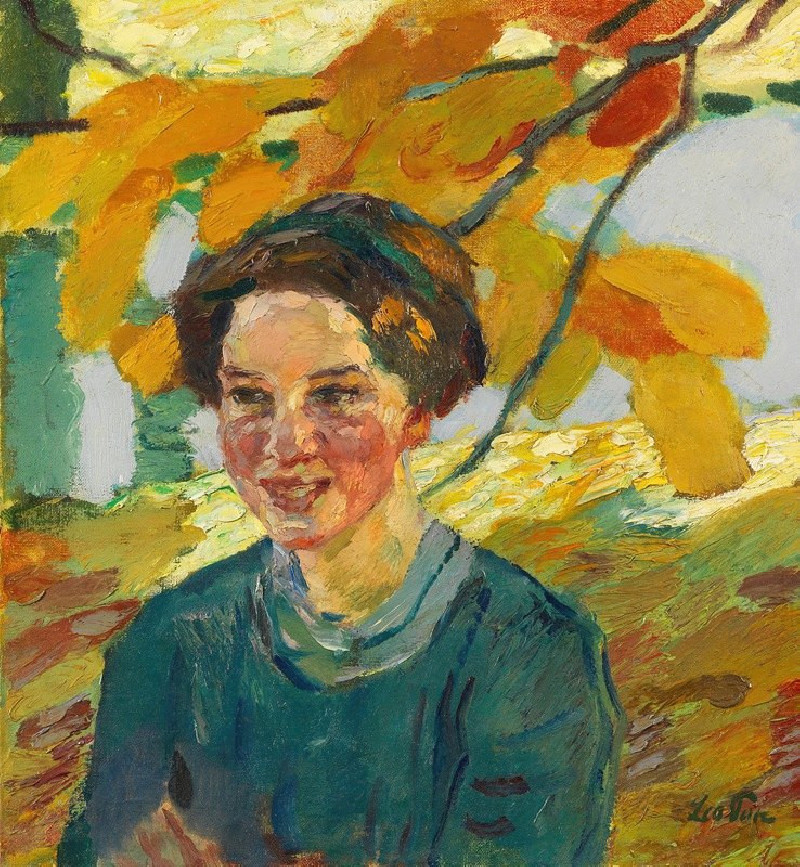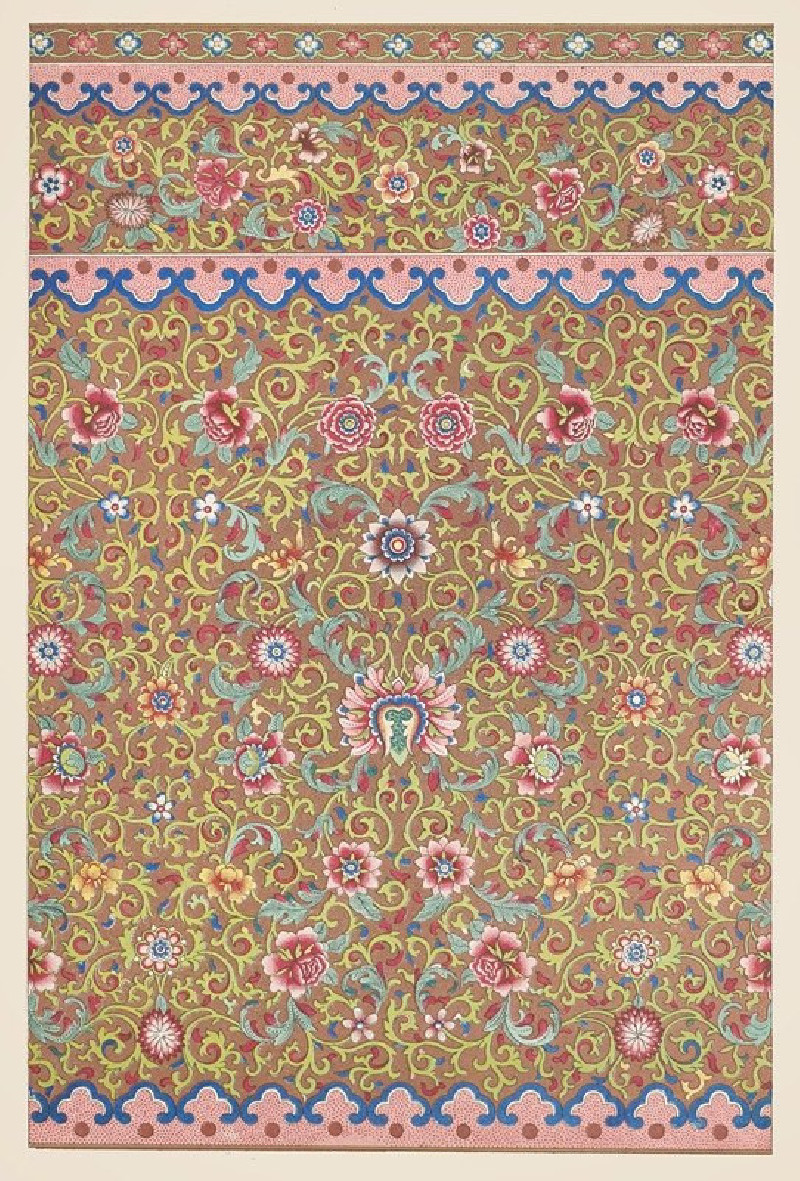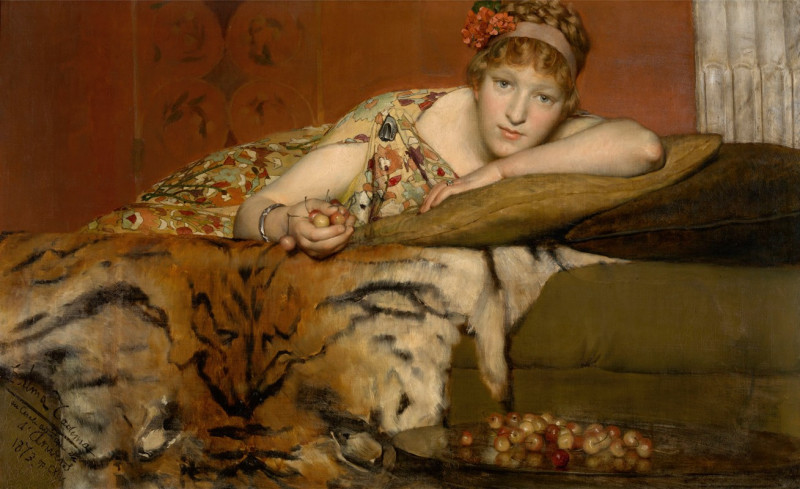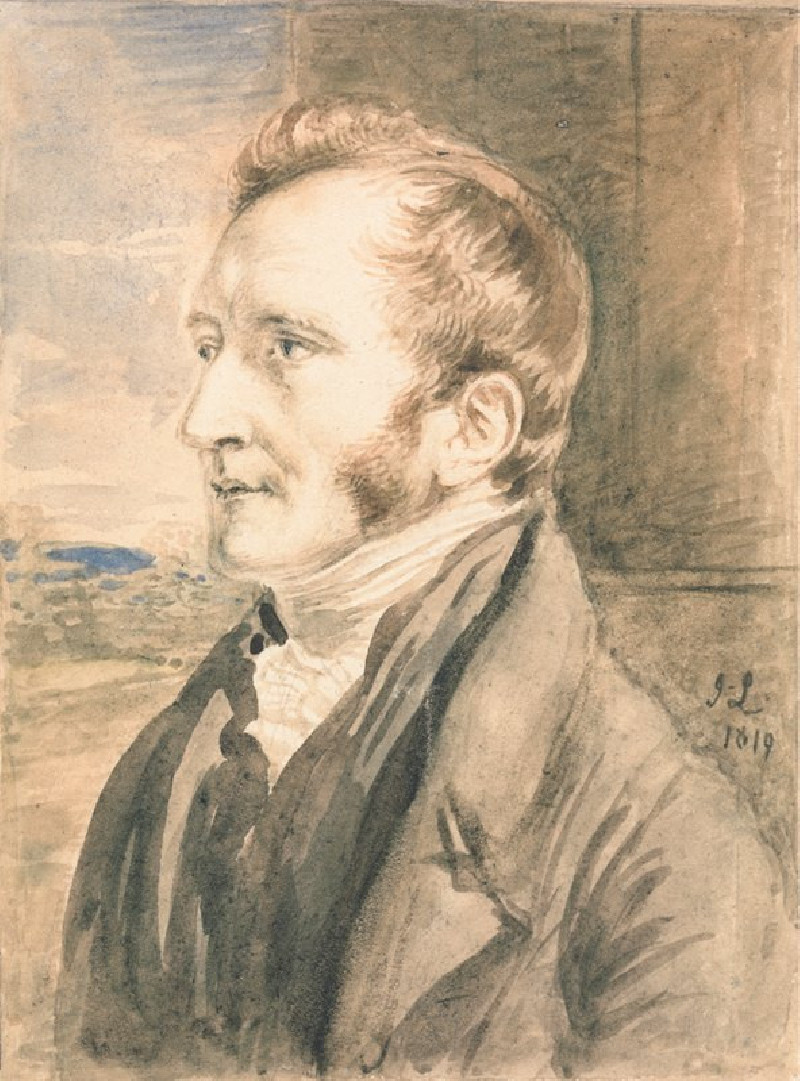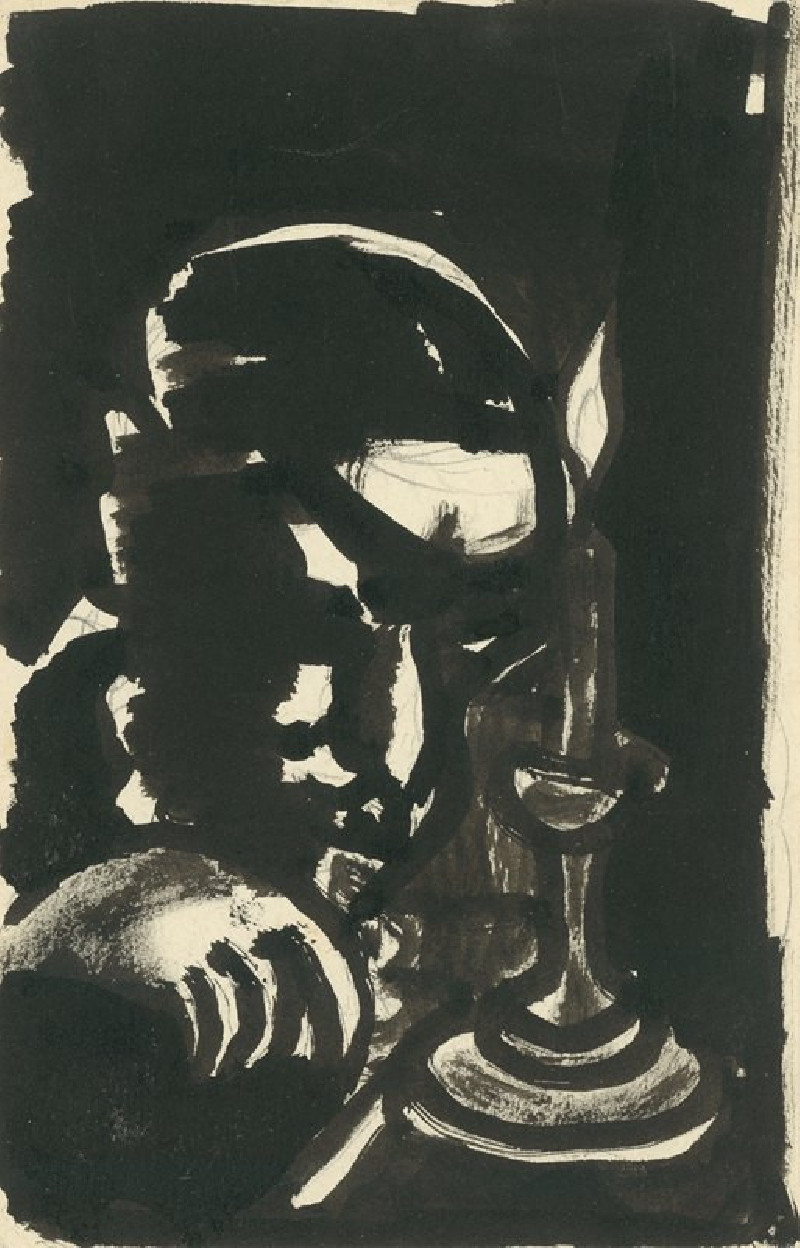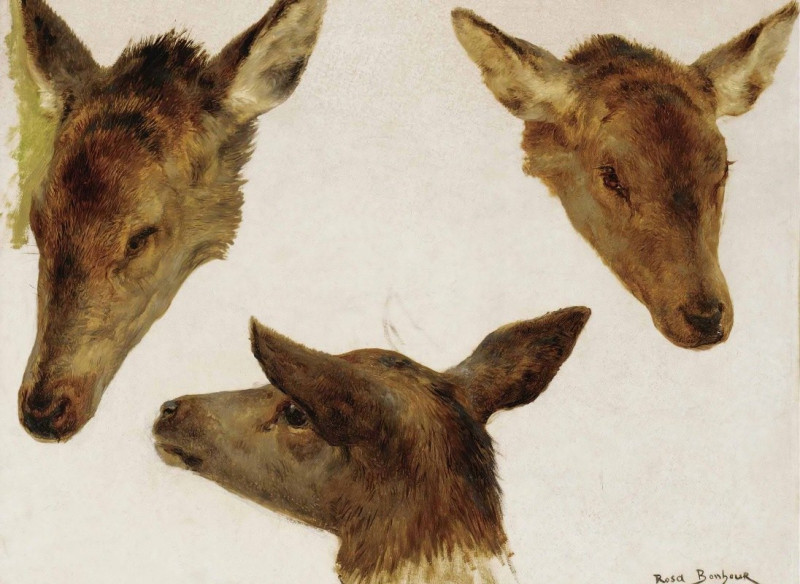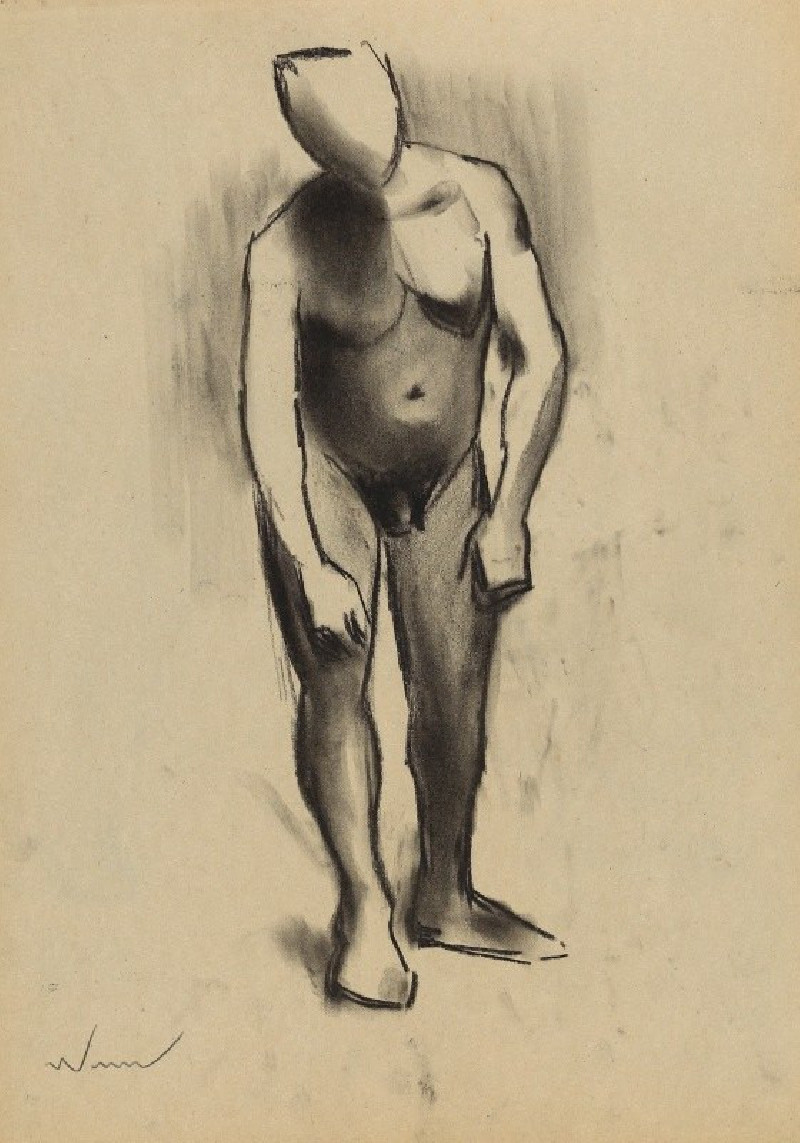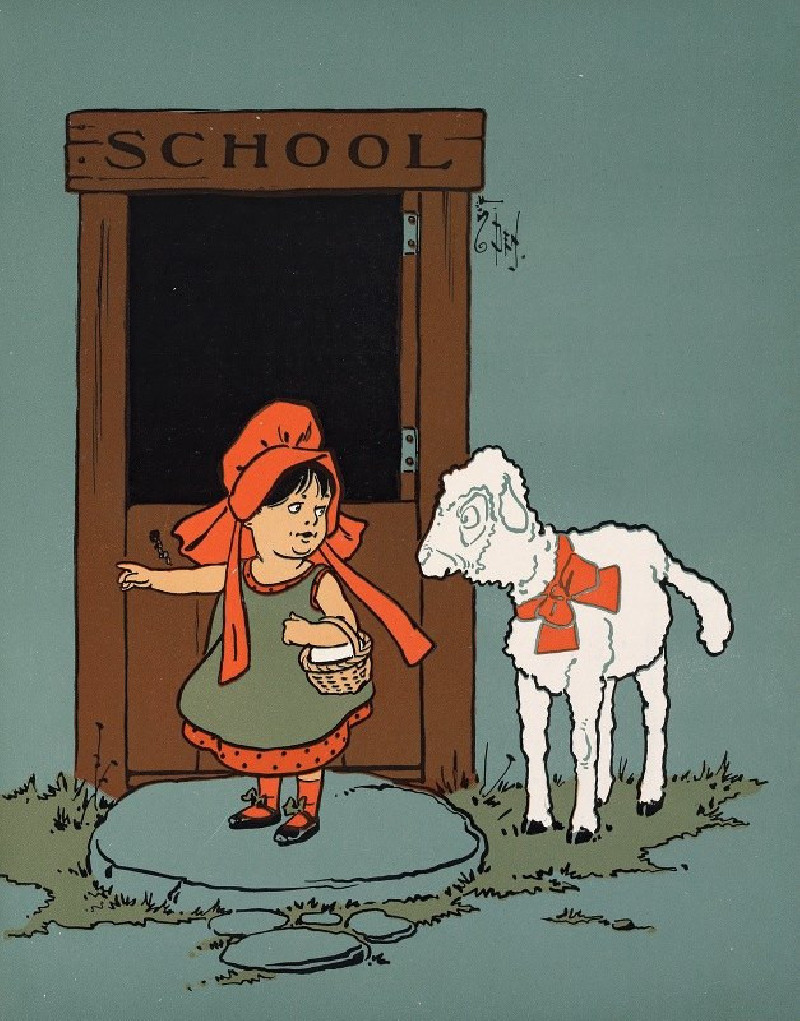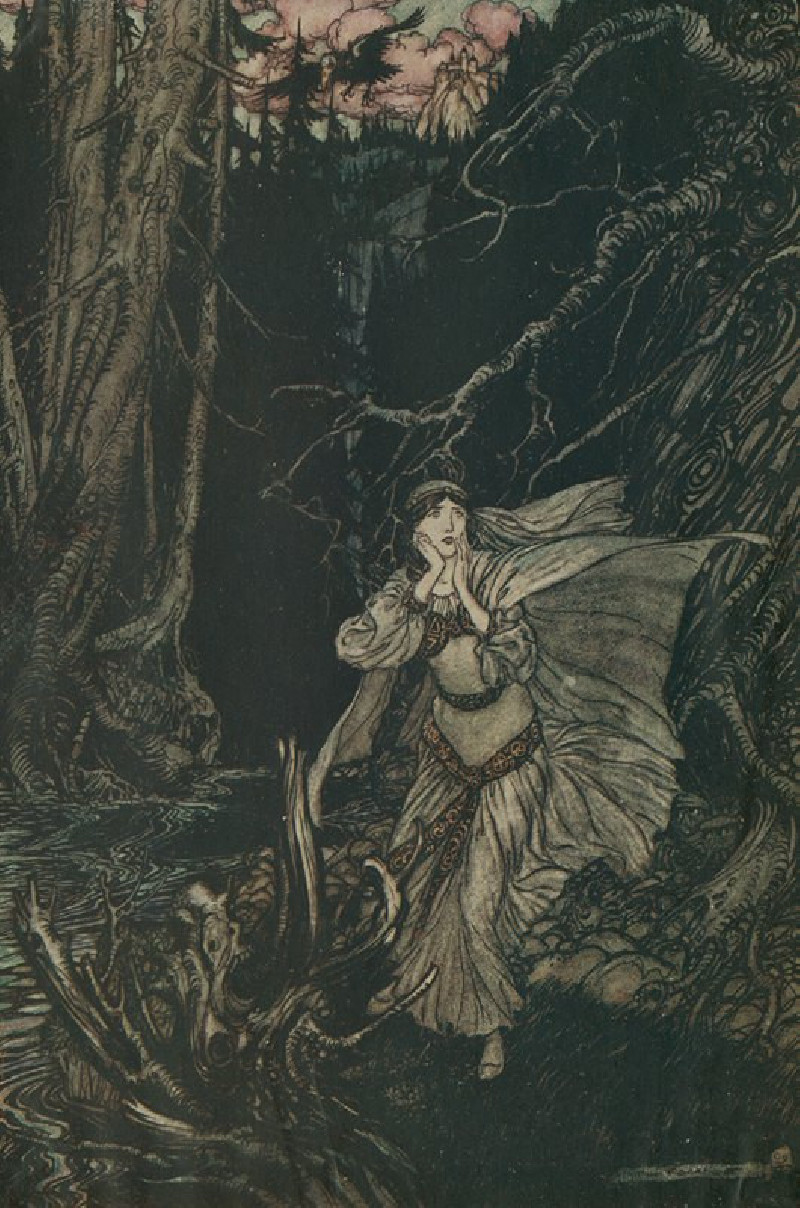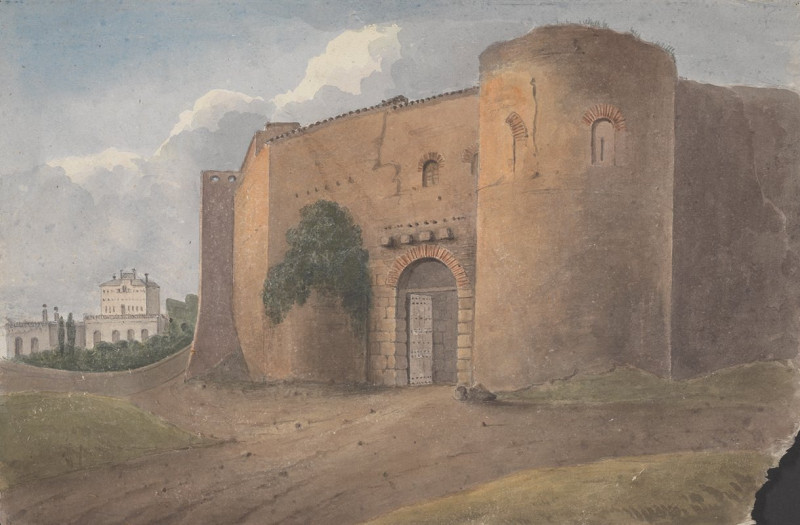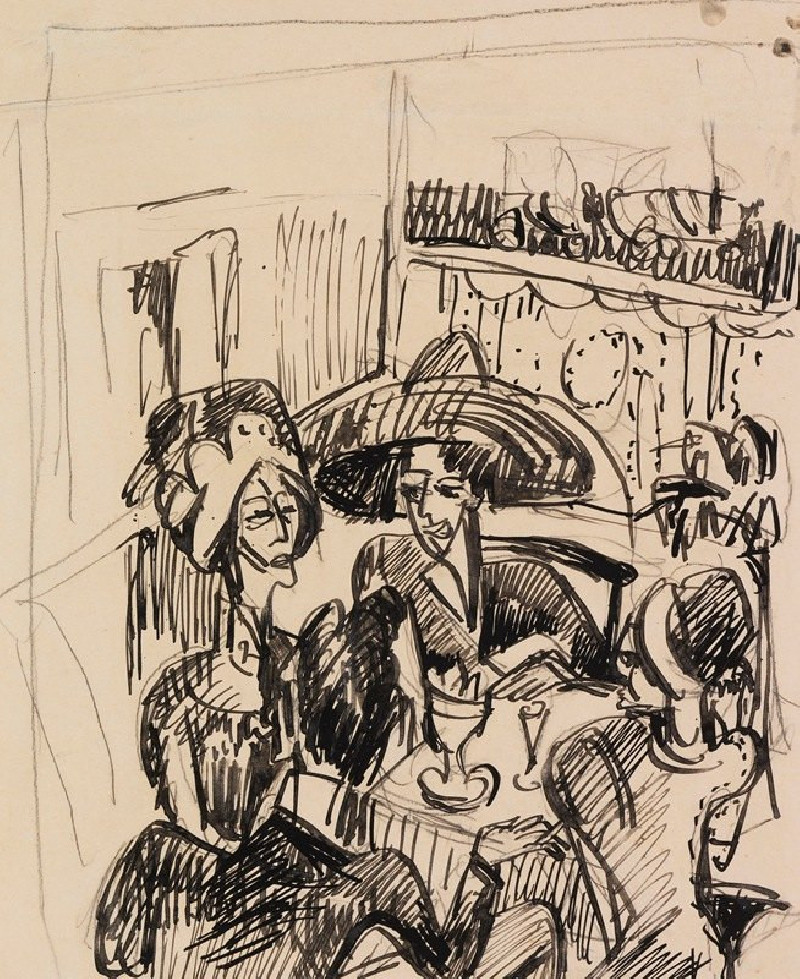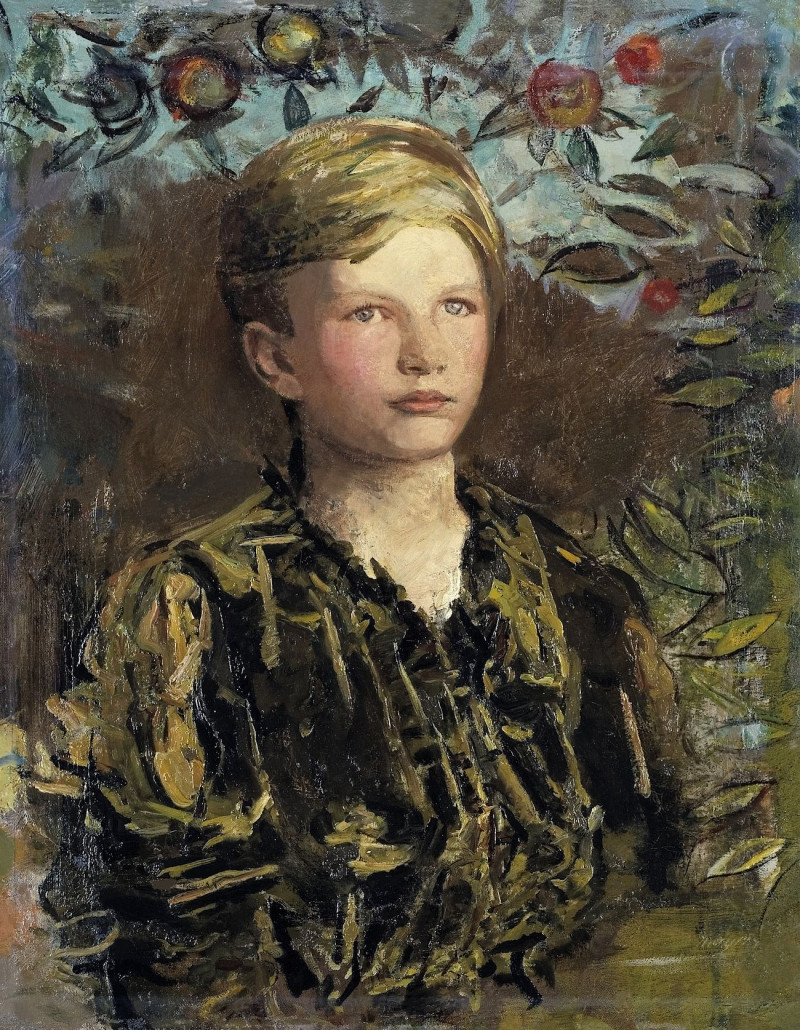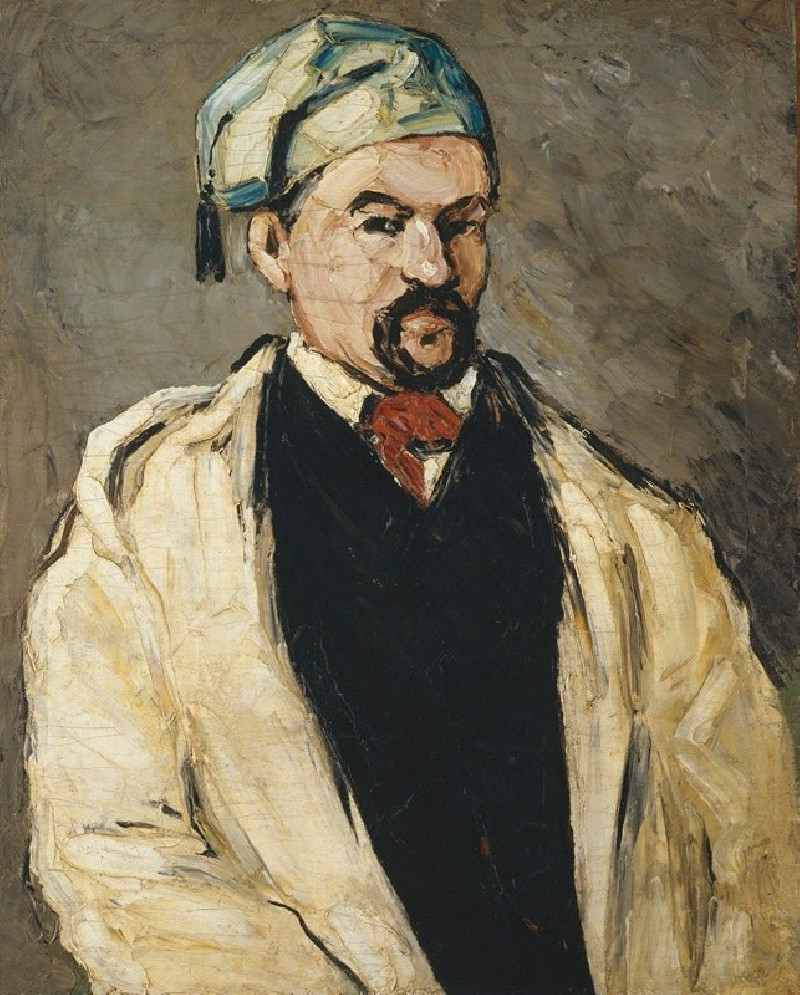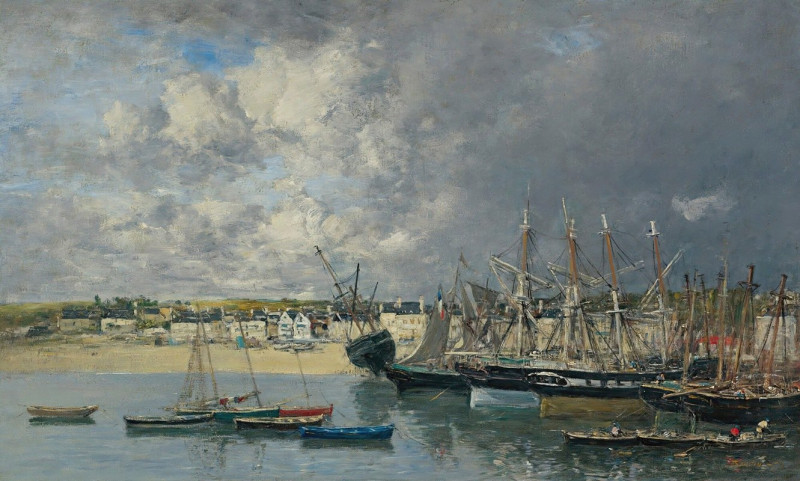Toni im Blumenbeet (1924)
Technique: Giclée quality print
Recommended by our customers
More about this artwork
Leo Putz's painting "Toni im Blumenbeet" (1924) captures a vibrant moment of leisure and contemplation amidst a lush garden. This expressionistic work is rich in texture and color, depicting a young woman named Toni, who is seated among densely packed flowering plants. The flowers are rendered with thick, vigorous brushstrokes in a palette of greens, yellows, and hints of red, showing the flourishing life of the garden.The central figure, Toni, is portrayed with a sense of intimacy and immediacy. Her downward gaze and the way she gently touches one of the plants suggest a moment of quiet interaction with nature. Toni's soft pink dress and light blouse blend harmoniously with her surroundings, emphasizing her connection with the garden.The background hints at a structure, perhaps a hint of a fence or a wall, blurry and abstract, focusing all attention on Toni and the immediate world around her. This painting not only showcases Putz's mastery of color and form but also evokes the serenity found in moments of simple pleasures.
Delivery
Reproductions are made to order and take 5 to 7 working days.
We send them out by courier and delivery takes another two working days.
If you need a reproduction sooner, please contact us - we can usually find a solution and produce it a little faster.
If you don't want to pay for postage, you can pick up your paintings at our galleries in Kaunas or Vilnius.
Returns
Yes, reproductions can be returned.
If you have any doubts more than 30 days after the date of purchase, please contact us - we will take the reproduction back for a refund or offer you a replacement!
We accept a maximum of two returns per customer - please note that we make reproductions to order, so please choose responsibly.
We do not refund shipping expenses.

